Nowhere else on Earth matches the raw, breathtaking beauty of this immense white wilderness—an elemental world of snow, ice, water, and rock. Antarctica is truly awe-inspiring.
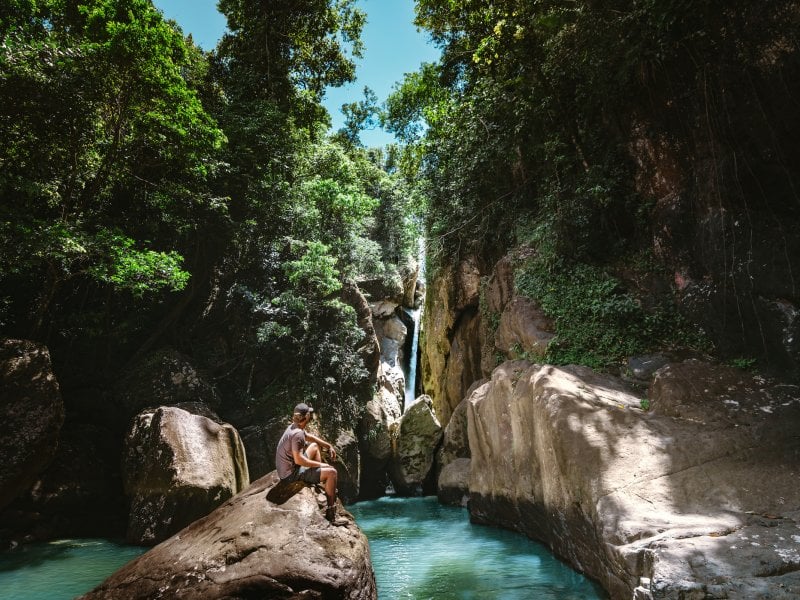
Spanning nearly 29,000 acres, El Yunque National Forest is one of Puerto Rico’s most treasured natural wonders. This vibrant rainforest features mountainous terrain dotted with waterfalls, rushing rivers, towering trees, and bamboo groves, all opening up to breathtaking ocean vistas.
El Yunque is the only rainforest within the U.S. National Forest System and is named after Yúcahu, the Taíno god of the forest and mountains. It offers 25 miles of hiking trails catering to all skill levels—from short, paved walks to challenging, overgrown climbs. Many trails gain elevation, with the toughest leading to El Toro, the highest peak at nearly 3,500 feet above sea level.
The forest has two main entrances:
The northern side near Luquillo, about 25 miles east of San Juan, which welcomes most visitors.
The southern side near Naguabo, quieter and more pristine for those seeking a wilder experience.
Note: Hurricane Maria in 2017 caused significant damage; always check trail conditions and park updates before visiting.
Hike through oxygen-rich mist and marvel at giant ferns reminiscent of the Jurassic era. Keep an eye (and ear) out for the coquí frog, Puerto Rico’s tiny national treasure. Birdwatchers will want binoculars to spot the rare Puerto Rican parrot, one of the world’s 10 most endangered bird species found only here.
Bring a raincoat—rain is common year-round!
There is no public transport to El Yunque, so you’ll need a private vehicle or join a guided tour from San Juan or Fajardo.
By car: From San Juan, follow signs from Highway 3 to Highway 191, then turn south at Palmer and continue to the forest. Note that:
Highway 191 south of Km 13 has been closed for years with no plans to reopen.
Avoid unmaintained western forest border roads—they often dead-end in dense jungle.
The El Portal Visitors Center reopened in 2022 after hurricane repairs.
The northern side features well-marked trails and ample parking.
The southern side offers more secluded, off-the-beaten-path adventures.
Reservations are recommended to manage visitor numbers.
Mid-April to June is ideal to avoid winter crowds and the wettest summer months.
Hurricane season runs from June to late November, bringing heavy rain and possible trail closures.
Expect daily showers—rainforest climate is part of the experience!
Open daily from 7:30 AM to 6 PM (closed on Christmas).
Entrance is free, though some attractions may charge fees.
Get your adrenaline fix with ziplines soaring through the canopy, or visit Carabalí Rainforest Park for horseback riding, go-karts, ATV tours, and hayrides.
Many tours operate from San Juan and Fajardo, offering transportation, highlights, and expert insights into the forest’s unique ecosystem.
There are no developed campgrounds. Primitive camping is generally restricted or requires permits; check the official website for current rules.
Stay in boutique lodges like Casa Flamboyant, Dos Aguas, or the Rainforest Inn—where tropical birdsong and coquí frogs serenade you to sleep.
For dining, try the vibrant Palmer area along Highway 191, with spots like Degree 18 Juice Bar, Lluvia Deli Bar, and Mi Vida Café & Burger. Inside the forest, roadside stands and the visitor center café offer simple refreshments.
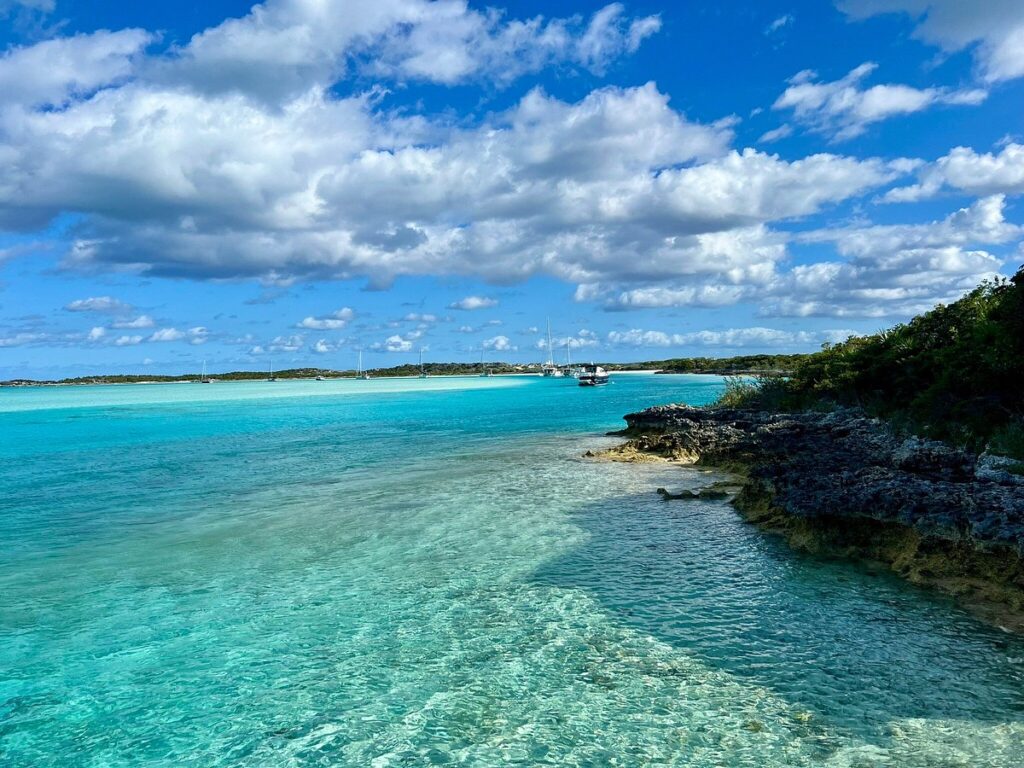
Founded in 1958 as the world’s first land-and-sea reserve, Exuma Cays Land & Sea Park spans a stunning 283 square kilometers of reef, cay, and ocean. This protected paradise safeguards the second-largest barrier reef in the Western Hemisphere—after Central America’s Mesoamerican Reef—offering spectacular marine life beneath the waves and vibrant ecosystems onshore.
Strictly managed under No Take principles, the park preserves an untouched environment where nothing may be removed or left behind. This ensures a thriving haven for colorful marine species, abundant birds, and unique island critters.
Watch for the rare Bahamian rock iguanas, elusive hutias (rodent-like mammals), and ancient stromatolites—living fossils formed by blue-green algae over 2,000 years old.
The real magic is underwater. Bring your snorkeling or diving gear—or book a boat tour from Nassau or George Town (Great Exuma’s charming capital). Popular operators like Dive Exuma offer day trips to explore the park’s vibrant coral reefs and dive sites.
Common marine residents include:
Angelfish
Eagle rays
Reef sharks
Nassau grouper
Porcupine fish
Clown fish
Lobsters
Sea turtles
Adventurous divers may encounter bull sharks and other large species. Unique blue holes—collapsed underwater sinkholes—dot the islands, with several near Stocking Island.
The iconic Thunderball Grotto—a series of shallow caves and tunnels—gained fame from the 1965 James Bond film Thunderball and remains a must-visit dive spot.
Exuma is also known for its swimming pigs on Major Cay. These friendly feral hogs have been attracting visitors for over a decade, paddling out from shore hoping for snacks (please feed only natural, plant-based foods and keep a respectful distance).
Accessing the park requires some planning—and expense. Most visitors arrive by live-aboard dive boats or chartered tours from Nassau or Great Exuma.
Great Exuma, a laid-back 37-mile cay, lies about 135 miles southeast of Nassau and has an international airport with regular flights from Nassau, Miami, Atlanta, and Fort Lauderdale.
George Town, Great Exuma’s pastel-hued capital, hosts boat operators and dive centers, plus budget stays like Marshall’s Guest House and more upscale options like Club Peace & Plenty, known for its Italian cuisine.
While George Town’s beaches are modest, water taxis (~BS$20 round trip) whisk visitors to Stocking Island, a beautiful sandy isle with beach bars and resort dining. Be sure to pack sunscreen—shade is scarce amid the scrubby vegetation.
Alternatively, taxi to Tropic of Cancer Beach on neighboring Little Exuma for a quieter escape.
If you have your own boat, mooring fees inside the park start around BS$25. Camping is allowed on Hawksbill, Warderick Wells, and O’Brien’s Cays with a BS$250 permit plus BS$25 daily fee. Arrange permits at the park headquarters on Warderick Wells Cay.
For those without boats, Out Islands Explorers in George Town offers sailing and guided kayak trips, plus kayak rentals.
Visiting Exuma Cays Land & Sea Park may take effort and investment, but the breathtaking natural beauty and unique experiences make it a once-in-a-lifetime getaway.
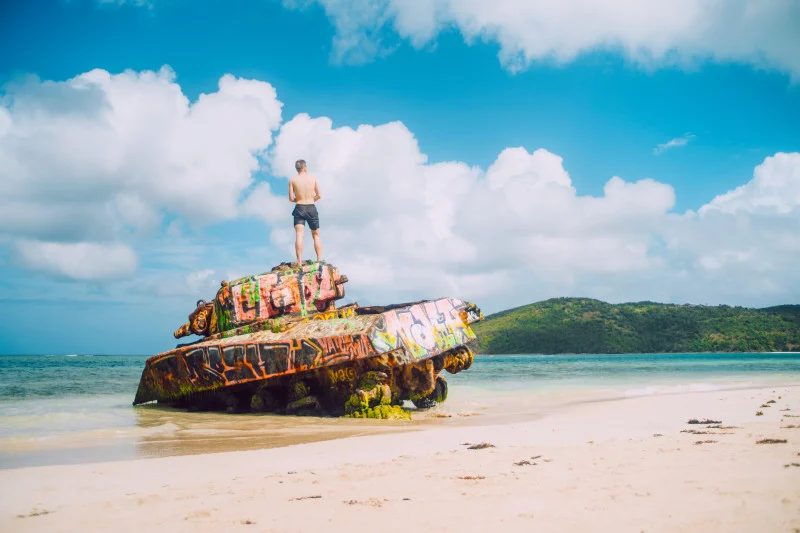
Stretching a full mile around a sheltered, horseshoe-shaped bay, Playa Flamenco is not only one of the best beaches on Culebra but also frequently ranks among the world’s top beaches.
Its name comes from the nearby lagoon, a winter haven for flamingos. Visit during this season, and you’ll feel like Robinson Crusoe, mesmerized by the crystal-clear water and tranquil surroundings.
Unlike other Culebra beaches lined with towering palms, Flamenco is backed by low scrub and trees. It can get very crowded on weekends and holidays, especially with day-trippers from San Juan, so plan to visit on a weekday for a more peaceful experience.
Playa Flamenco stands out as the only beach on the island with a full range of amenities:
Food kiosks selling snacks, lunches, rum punches, and beer
Beach gear rentals
Toilets and outdoor showers
Lockers and lifeguards
Picnic tables
Parking (often busy)
Camping allowed in designated zones
At the beach’s western end rests a rusting tank, a remnant of when U.S. troops used the area for invasion practice. Local artist Jorge Acevedo painted it with swirling green and yellow stripes symbolizing a dancing fish, making it a beloved landmark.
The most popular—and budget-friendly—way to reach Culebra is via the Autoridad de Transporte Marítimo ferry from Ceiba, priced at $2.25 for adults. The ferry runs about five round trips daily, each taking roughly 45 minutes, but expect delays, especially on busy weekends and summer months.
Tips:
Buy tickets and check schedules at porferry.com
Arrive at least an hour early at the ferry terminal
Locals often take priority on busy days
From the ferry terminal in Dewey, Playa Flamenco is 2.8 miles (4.5 km) away, a straightforward paved drive along Highway 251 that passes the airport before ending at the beach.
By car: ~15 minutes
On foot: ~40 minutes
Public taxis (públicos) run this route for about $4 per person, and you can flag them down anywhere along the way.
Culebra has kept major hotel chains at bay, favoring apartments and homestays over large resorts. Several accommodation options lie near the beach:
Camping:
Playa Flamenco is the only legal camping spot on the island, divided into five zones (A through E). Zone E, closest to the beach, is the most popular. Bathrooms are open 24/7; outdoor showers have limited hours. No reservations are usually needed, and camping gear can be rented locally.
Villa Flamenco Beach:
A charming six-unit guesthouse right by the beach. Enjoy self-catering kitchens, relaxing hammocks, and the warm hospitality of owners Violetta and Juan, who are happy to share island tips. (Closed early October to mid-November.)
Culebra Beach Villas:
The only apartment complex directly on Playa Flamenco, offering 33 self-catering units that accommodate two to eight guests. Each villa is individually owned and decorated, so quality varies. Wi-Fi is available in the reception area only. Stock up on groceries in Dewey before settling in.
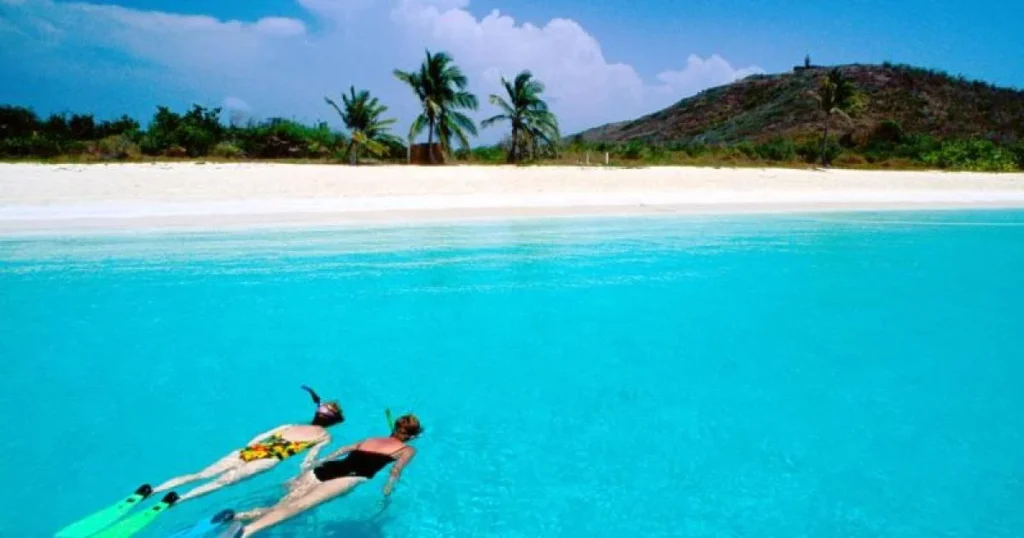
If you’re wondering why you should hire a water taxi, Isla Culebrita is the perfect reason. This small, uninhabited island lies just east of Playa Zoni and forms part of the Culebra National Wildlife Refuge. With six pristine beaches, tidal pools, vibrant reefs, and important seabird nesting areas, Isla Culebrita has changed little over the past 500 years.
The island’s north beaches, especially the long crescent-shaped Playa Tortuga, serve as vital nesting grounds for green sea turtles. You might even spot these graceful creatures swimming just offshore near the reefs.
Dating back to 1886, the Faro Culebrita lighthouse was one of the Caribbean’s oldest operational lighthouses before its closure by the US Navy in 1975. Now in ruins, the lighthouse awaits restoration. A well-marked trail leads to the site, offering stunning, postcard-perfect views—though the lighthouse itself is off-limits to visitors.
Isla Culebrita offers very little shade, so bring plenty of water, sunscreen, and a hat. Don’t forget your snacks and snorkeling gear to make the most of this natural haven.
Unless you have a private boat, round-trip water taxis from Culebra are your only option to visit Isla Culebrita. Expect to pay about $65 per person, typically including beach gear, a hammock, and snorkeling equipment.
Reliable water taxi operators include:
H2O Water Taxi
Captain German offers round trips to nearby cays, often including beach and snorkel gear.
Phone: 787-685-5815 | Email: amarog1281@hotmail.com
Cayo Norte Water Taxi
Licensed Captain Louis Padrón provides tours to Isla Culebrita, Cayo Norte, and Cayo Luis Peña.
Phone: 787-376-9988
If fully booked, you can often find captains along Dewey’s waterfront offering services.
Isla Culebrita is uninhabited with no accommodations. The nearest places to stay are on Culebra Island.
Most visitors explore one or two beaches in a day:
West Beach: The main mooring spot for water taxis, a narrow strip of sparkling sand on the island’s west side.
Playa Tortuga (Turtle Beach): Named for the green sea turtles that breed here, this crescent beach on the north coast features warm tidal pools known locally as “Jacuzzi.”
Trash Beach: While sometimes littered by debris due to currents, it can also be a dramatic and beautiful stretch of sand on the east side.
East Beach: A smaller, cleaner beach popular for snorkeling, with two nearby lagoons.
South Beach: The quietest and least visited beach, offering excellent snorkeling opportunities.
Just a few minutes before the ferry arrives in Culebra, you’ll pass Cayo Luis Peña, a smaller cay known for its peaks, coves, forests, and sheltered beaches. It’s part of the Culebra National Wildlife Refuge and offers great snorkeling around the island.
You can reach Luis Peña by kayak or water taxi (fares start around $40 per person), making it a peaceful and often less crowded alternative to Isla Culebrita.

Locals say that the stunning Bahía Mosquito (Mosquito Bay), a protected wildlife preserve on the island of Vieques about two miles east of Esperanza, boasts the highest concentration of phosphorescent dinoflagellates (algae) not only in Puerto Rico but in the world.
When these tiny creatures are disturbed by movement, a chemical reaction in their bodies produces a glowing flash—a defense mechanism scientists believe wards off predators. As a result, paddling through the lagoon is like entering a psychedelic light show, with your kayak, paddle, electric boat, or even fish stirring up fluorescent blue sparkles beneath the water’s surface.
You can drive east on the rugged Sun Bay Road from Esperanza and stop for a distant view of the bay (parking well back from the mangroves). However, joining an organized tour lets you truly immerse yourself in the phosphorescent spectacle. Knowledgeable guides share fascinating details about the algae, local flora, and fauna.
Keep an eye out for birds such as pelicans, frigatebirds, and cuckoos. Beneath the water, small sharks and rays add to the luminous display as they move through the bay.
Popular tour operators include Abe’s Snorkeling & Bio-Bay Tours and Aqua Sunset Tours, the latter offering trips in crystal-clear canoes that enhance the magical experience. Make sure to book with operators that use only kayaks or electric motors, as anything else could harm the delicate ecosystem. Reservations are essential during peak season, and the best time to visit is during a new moon for maximum darkness and visibility.
While nearby Barracuda Bay also contains dinoflagellates, most tours don’t venture that far. Swimming in Bahía Mosquito is illegal to protect the fragile environment.
The island of Vieques offers a variety of lodging options. The nearby town of Esperanza, just two miles west of the bay, is an excellent base with boutique hotels nestled in the hills and charming guesthouses along oceanfront Calle Flamboyan.
For proximity to the bay, Acacia Guesthouse and El Blok are both about a 40-minute walk or a short 7-minute taxi ride away. Budget travelers can consider Bananas, Esperanza’s original budget guesthouse, for a more affordable stay.
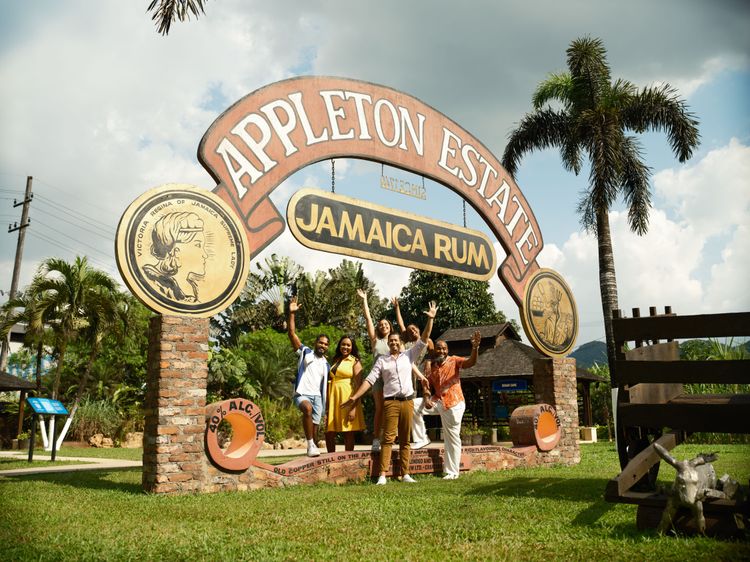
You can smell the sweet aroma of molasses drifting through the air long before you arrive at the Appleton Estate, located nearly a mile northeast of Maggotty. As Jamaica’s largest and oldest rum distillery, Appleton has been expertly blending rums since 1749. The tour begins with complimentary rum cocktails and a brief video, followed by a sleek and informative walkthrough of the entire process—from extracting molasses from sugarcane to fermentation, distillation, and aging. At the end, you get to sample the Caribbean’s signature spirit, famously known as “rocket fuel.”
Guests can enjoy tastings of three distinct rums: the Signature Blend, aged at least four years; the smooth Reserve Blend, matured for six years; and the rich Rare Blend, aged twelve years. Though the exclusive 50-year-old rum commemorating Jamaica’s 50th independence anniversary (2012) is sold out, if you’re visiting in 2062, you might be lucky enough to sample the Nine Prime Ministers rum, currently aging to celebrate 100 years of Jamaican independence. Plus, every visitor receives a small complimentary bottle to take home.
At $30, the tour offers excellent value, blending humor and audience participation to keep visitors engaged. After your tasting, indulge in a generous plate of delicious jerk chicken or pork with rice and peas and all the fixings at the onsite Black River Lounge. A gift shop is also available if you want to stock up on your new favorite rums.
Most Jamaican tour companies offer transportation to and from Appleton Estate (the ride back is especially fun after sampling three varieties of rum). If you’re traveling independently, the distillery is about half a mile east of Maggotty, and taxis typically charge around J$600 for a round trip. While advance booking isn’t required, it’s recommended to avoid disappointment.
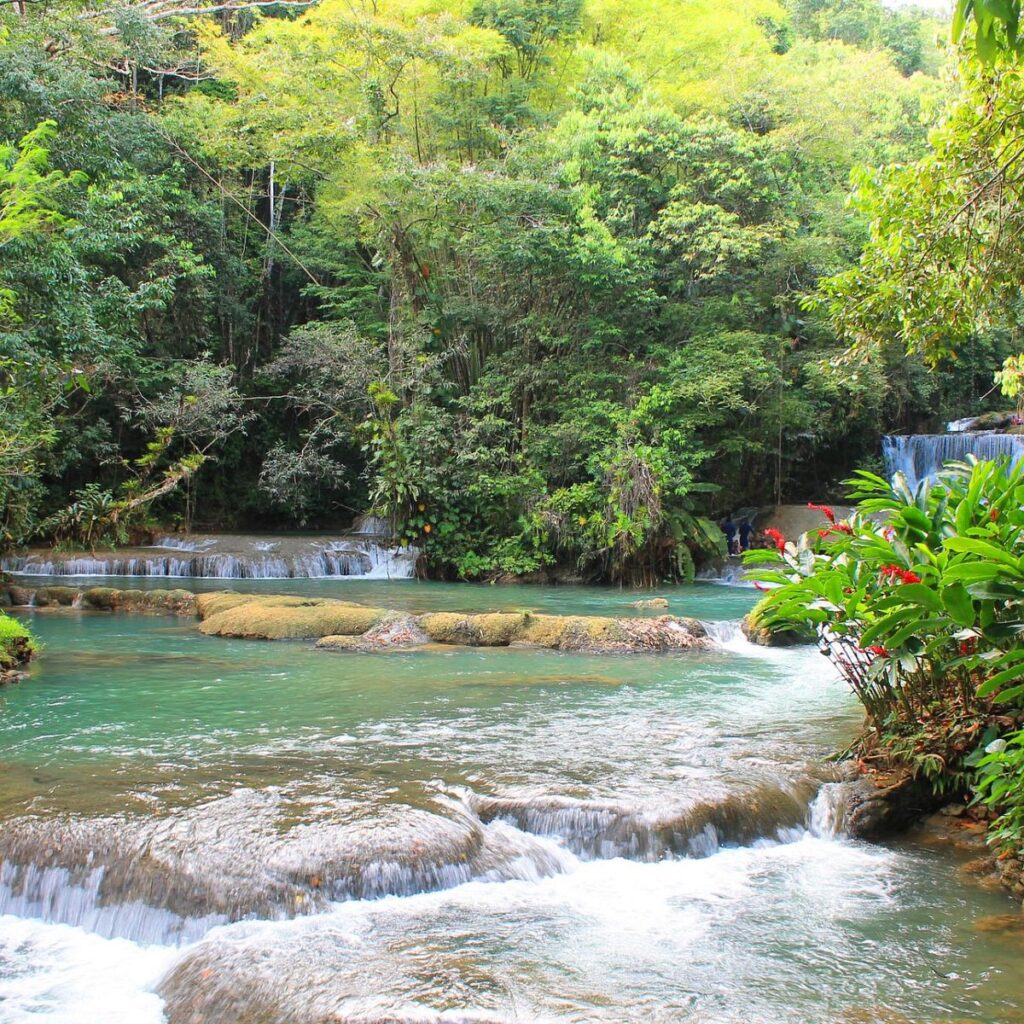
Tucked away deep in St. Elizabeth Parish, YS Falls feels like a hidden paradise straight out of Eden. This stunning series of seven cascades tumbles a total of 118 feet (36 meters) down limestone cliffs, each separated by refreshing pools ideal for swimming and cooling off amid lush jungle surroundings.
Lifeguards are on hand to assist with the popular rope swing above one of the pools, while a stone staircase leads you along the cascades to the main waterfall. Since there are no lockers, be sure to keep your valuables with you at all times. The name “YS” is believed to come from British plantation owners John Yates and Richard Scott, who purchased the land from the Crown in the 17th century.
For thrill-seekers, a canopy zip line offers a thrilling flight over the falls, complete with breathtaking views and plenty of adrenaline. Visitors are transported to the cascades by a tractor-drawn jitney, where you’ll also find picnic grounds, changing rooms, a treehouse, and a shallow river-fed pool perfect for relaxing.
Waterfalls: $20 per adult, $12 per child (15 and under)
Canopy Zip Line: $49 per adult, $39 per child (12 and under)
Nearly every Jamaican tour operator and many hotels include YS Falls trips in their offerings. For an early start and fewer crowds, consider driving yourself or hiring a taxi to arrive right when the park opens.
The entrance to YS Falls lies just north of the junction of the B6 toward Maggotty. From the A2 (a smoother road if you’re driving), take the turnoff about 1 mile (1.5 km) east of Middle Quarters, then drive 3.4 miles (5.5 km) north to the falls.

Among Jamaica’s many waterfalls, Reach Falls truly stands out as one of the island’s most breathtaking natural gems. White rushing cascades spill over limestone tiers into a series of jade-colored pools, all nestled within a bowl of pristine virgin rainforest. Adventurous visitors can walk, wade, and swim their way up an unmarked jungle path below the main entrance to reach the edge of the falls.
Local guides are available at the falls and are highly recommended, especially if you want to explore the upper pools. One highlight is the “rabbit hole,” a small underground underwater tunnel just above the falls that’s thrilling to swim through. Experienced guides like Leonard Welsh (849-6598) and Kenton Davy (438-3507) can enhance your hike by pointing out native plants and wildlife along the way.
At the top of the cascades is the Mandingo Cave, Reach Falls’ crown jewel. Getting there requires climbing shoes and a readiness for a challenging trek involving slippery rocks, neon-green moss, and fresh mountain pools. Some sections involve diving through underwater tunnels and braving walls of cascading white foam — an unforgettable adventure for those who make the climb.
Adults: $10
Children (11 and under): $5
The turnoff to Reach Falls is well marked, about 2 km (1.2 miles) north of Manchioneal. You can take any taxi running the Port Antonio–Manchioneal route, which will drop you off near the turnoff. From there, it’s a further 3 km (1.8 miles) uphill to the falls.
WhatsApp us